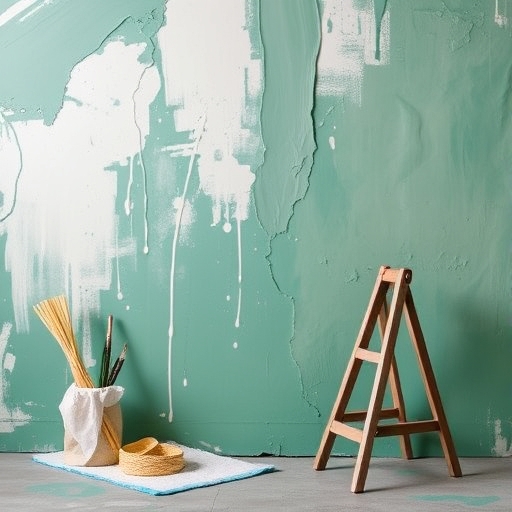What to Paint – A Comprehensive Guide for Artists of All Levels
Choosing what to paint can be the biggest hurdle for artists, regardless of their skill level. From the daunting blank canvas to the overwhelming array of subjects and styles, the initial decision can feel paralyzing. This article aims to demystify the process, offering guidance and inspiration for finding your perfect painting subject, no matter your experience.
Finding Inspiration – Where to Look for Painting Ideas
The world is brimming with potential painting subjects; the challenge lies in recognizing them. Inspiration can strike anywhere, anytime. Here are some key avenues to explore:
1. Everyday Life and Personal Experiences:
This is often the richest source of inspiration. Your paintings don’t need to be grand statements; they can be intimate reflections of your life.
Objects: Still life paintings are a classic for a reason. Arrange everyday objects – fruits, vegetables, books, tools – in interesting compositions. Experiment with lighting and shadow to create depth and mood.
People: Portraits, both self-portraits and those of loved ones, provide opportunities for exploring character and emotion. Capture candid moments or pose your subjects thoughtfully.
Places: Paint your favorite room, a cherished landscape, or a bustling street scene. Focus on the details that resonate with you.
Memories: Use painting to recreate vivid memories, capturing emotions and sensory details. A childhood home, a memorable vacation, or a significant event can all be compelling subjects.
Emotions: Abstract art offers a perfect avenue to express emotions visually. Use color, texture, and form to translate feelings onto the canvas.
2. Nature’s Abundance:
The natural world offers an inexhaustible source of beauty and inspiration.
Landscapes: From vast mountain ranges to delicate wildflowers, landscapes provide endless opportunities for exploration. Focus on capturing light, atmosphere, and the interplay of elements.
Animals: Painting animals, whether pets, wildlife, or farm animals, requires keen observation and understanding of form and movement.
Plants and Flowers: The delicate intricacies of flowers, the textures of leaves, and the forms of trees offer fascinating subjects for botanical painting.
Seascapes and Water: The ever-changing nature of water, the movement of waves, and the reflections of light make seascapes captivating subjects.
3. Exploring Different Art Styles and Movements:
Studying different art movements and techniques can spark new ideas and push your creative boundaries.
Impressionism: Capture the fleeting effects of light and color.
Realism: Strive for accurate representation of form and detail.
Abstract Expressionism: Explore spontaneous gesture and emotional expression.
Surrealism: Create dreamlike and fantastical images.
Cubism: Fragment and reassemble forms to create a multifaceted perspective.
4. Drawing Inspiration from Other Artists and Artworks:
Studying the work of other artists can be hugely beneficial. Don’t copy directly, but analyze their techniques, composition, and subject matter. What aspects of their work resonate with you? How can you incorporate similar elements into your own style?
5. Using Prompts and Challenges:
If you’re struggling to find inspiration, try using prompts or taking part in online painting challenges. Many online communities and social media groups provide daily or weekly prompts to jumpstart your creativity.
Choosing Your Medium and Subject Matter: A Practical Approach
Once you’ve identified potential subjects, consider the medium that best suits your artistic goals and the nature of your subject.
Oil paints: Ideal for rich colors, blending, and detailed work. Suitable for still life, portraits, and landscapes.
Acrylic paints: Fast-drying, versatile, and water-based. Suitable for a wide range of subjects and styles.
Watercolors: Transparent and delicate, allowing for luminous effects. Suitable for landscapes, botanical illustrations, and expressive works.
Gouache: Opaque water-based paints, suitable for vibrant colors and detailed work.
Tempera: Egg-yolk-based paints, offering a matte finish and archival quality.
Consider the following when matching your medium to your subject:
Detail: Intricate subjects may require a medium that allows for fine detail, like oils or gouache.
Texture: If you want to emphasize texture, consider mediums that allow for impasto (thick application of paint).
Color: Some mediums are better suited to certain color palettes than others.
Transparency: Watercolors offer a unique transparency that can be difficult to replicate with other mediums.
Refining Your Ideas: From Inspiration to Execution
Once you’ve chosen a subject and medium, it’s time to refine your idea:
Composition: How will you arrange the elements within your painting? Consider the rule of thirds, leading lines, and negative space.
Color Palette: What colors will you use to create the desired mood and atmosphere? Experiment with different color combinations.
Lighting: How will you depict light and shadow to create depth and form? Observe how light falls on your subject.
Brushstrokes: Consider the type of brushstrokes you will use to create texture and movement.
Overcoming Creative Blocks
Even experienced artists experience creative blocks. Here are some strategies to overcome them:
Take a break: Step away from your painting for a while and do something else entirely.
Experiment: Try a new technique or medium.
Seek inspiration: Look at other artists’ work, visit a museum, or go for a walk in nature.
Simplify: Break down your subject into smaller, more manageable parts.
Don’t strive for perfection: Embrace imperfections and allow yourself to make mistakes.
FAQ about Choosing What to Paint
Q: I’m a beginner. What should I paint? A: Start with simple subjects like fruits, vegetables, or basic geometric shapes. Focus on mastering fundamental techniques before tackling complex compositions.
Q: How do I overcome artist’s block? A: Try the strategies mentioned above, such as taking a break, experimenting with new techniques, and seeking inspiration from external sources.
Q: Is it okay to paint from photographs? A: Absolutely! Photographs can be a valuable tool for capturing detail and composition, but try to add your own artistic interpretation.
Q: How do I know if my painting is “good”? A: Art is subjective. Focus on your own artistic journey and improvement, rather than seeking external validation.
Painting Mediums
| Medium | Drying Time | Texture | Transparency | Cost | Best For |
|---|---|---|---|---|---|
| Oil Paints | Slow | Variable | Opaque | High | Detailed work, portraits |
| Acrylic Paints | Fast | Variable | Opaque | Medium | Versatile, fast work |
| Watercolors | Fast | Smooth | Transparent | Low | Landscapes, botanicals |
| Gouache | Fast | Smooth | Opaque | Medium | Vibrant colors, details |
| Tempera | Fast | Smooth | Opaque | Medium | Archival quality |
Ultimately, the best thing to paint is whatever sparks your interest and passion. Don’t be afraid to experiment, try new things, and develop your own unique style. The journey of finding your artistic voice is as important as the final product. Embrace the process, celebrate your progress, and enjoy the creative adventure!

